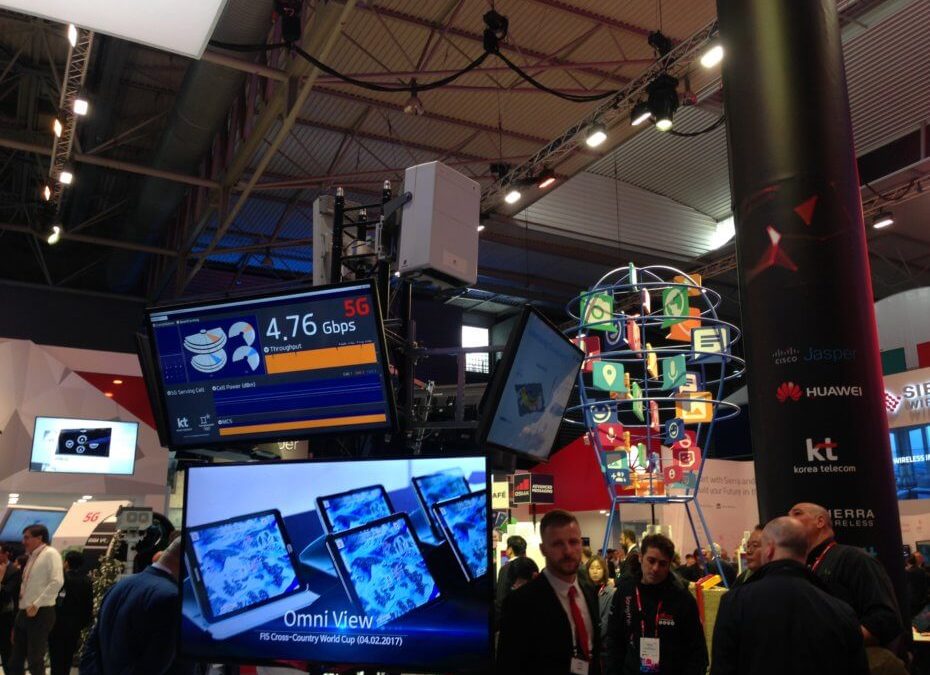
This may be remembered as the year the telecommunications industry stopped squabbling over standards for next generation telecommunications networks and started to make 5G a reality.
The announcements regarding 5G surged into a tidal wave this year at Mobile World Congress in Barcelona. After several years of countries and companies making bland pledges to form committees to consider standards and partnerships to conduct research, the latest edition of the industry’s largest gathering was filled with concrete product announcements, pilot launches, and promises that the next revolution is at hand.
It’s not.
Despite the pervasive talk of 5G at MWC, and the need for every booth and product to hype it relentlessly, the reality is that it remains far over the horizon. The need to sort out technical issues, standards, and business models points to the roadblocks that still remain. For the near future, users can expect more evolution than revolution when it comes to wireless network speeds.
“Many of you are wondering, ‘Why do we need 5G?’” said Nokia CEO Rajeev Suri in a keynote address. “‘Is it worth the billions that will be spent on it?’ Yes.”
But in trying to temper expectations, he added: “It will not happen overnight. We believe that most carriers will want an evolutionary process that maximizes their current investment.”
It’s easy to see why the notion of 5G gets the industry’s adrenaline pumping. The leap from 3G networks to 4G, with a top theoretical speed of 100 Mbps, was giant. But it would be nothing compared to 5G, which must provide a minimum of 20 Gbps and be capable of connecting 1 million devices within a square kilometer.
This speed and density are almost unfathomable today. 5G is the technology that will allow us to control fields of robots with no latency and allow for roads filled almost exclusively with autonomous vehicles and skies filled continuously with unmanned drones. Not to mention all the developments that we can’t possibly imagine in a world where everything is connected all the time.
Mats Granryd, director general of GSMA, the industry group that organizes MWC, predicted there would be 1 billion 5G connections by 2025.
“Our industry is driving standards, business models, and public policy,” he said. “We’ll have self-driving cars reacting in milliseconds to make crucial decisions. Robots will interact with themselves and their environment.”
But that number of connections is smaller than it sounds. It’s not clear in this case if GSMA is talking about people or machines. Still, getting even to that modest…

